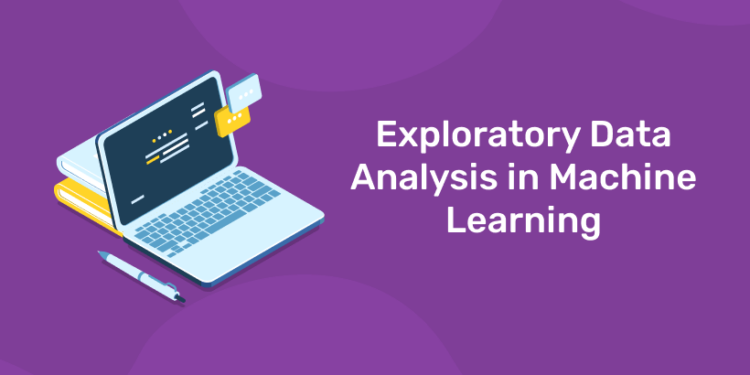Table of Contents
Working with data includes exploratory data analysis in its entirety. Today’s data scientists and analysts devote the majority of their time to exploratory data analysis, or EDA, and data wrangling. You must clean your data and make sure it is in an appropriate state before you begin data analysis or subject it to a machine learning algorithm. Additionally, it is crucial to be aware of any persistent trends and strong correlations that may be present in your data. Exploratory data analysis is the method used to get to know your data in-depth. With this article we are letting you know about the importance of carrying out EDA, advantages of EDA, steps involved and importance of visualizing data in exploratory data analysis.
Looking for a Data science and Machine learning Career? Explore Here!!
So, let’s dive in…
Why Exploratory Data Analysis in Machine Learning
Users examine and comprehend their data using statistical and graphical techniques during data exploration, sometimes referred to as exploratory data analysis (EDA). Choosing a model or method to utilize in the following steps, as well as spotting trends and issues in the dataset, are all aided by this process. EDA’s primary goals are to find mistakes and outliers in the data as well as to recognise various patterns. It enables Analysts to comprehend the data more thoroughly before assuming anything. The outcomes of EDA assist firms in understanding their customers, growing their business, and making informed decisions.
The usage of the aforementioned objectives forms the basis of the data exploration analysis’s function. After the data has been formatted, the analysis that has been done reveals patterns and trends that aid in taking the right measures necessary to achieve the business’s anticipated goals. It is expected that appropriate EDA will completely address all questions pertaining to a given business decision, just as we expect specified responsibilities to be completed by any executive in a specific job role. Data science requires the best data aspects to be taken into account by the model because it entails constructing models for prediction. EDA makes sure that the proper patterns and trends are made available so that the model may be trained to produce the desired results, much like a good recipe.
Benefits of EDA in Machine Learning
-
Deep Understanding of Variables
Data analysts can greatly increase their understanding of a variety of dataset-related factors. They can use EDA to extract a variety of data, including averages, means, lowest and maximum values, and additional data needed for properly preparing the data.
-
Explores Trends and Patterns of Dataset
EDA can also be used to aid in the discovery of patterns in a dataset. It’s crucial to look for patterns in a dataset because they can aid with estimate and prediction. This might assist your business in making future plans and identifying potential issues and solutions.
-
Better Decision Making
The most important benefit of implementing EDA in a company is that it aids in increasing data comprehension. With EDA, they may use the tools at their disposal to gather crucial insights, draw conclusions, and support decision-making based on those insights.
Important Steps involved in Exploratory Data Analysis
- Dataset Observation: Exploratory data analysis begins with a high-level examination of your dataset. Determine the size of your dataset, including the number of rows and columns, to get started. This can assist you in foreseeing potential problems with your data in the future.
- Missing Value Treatment: Following your dataset’s observation, you may begin looking for any missing values. When you discover missing values, consider the potential causes of their absence. You might be able to use estimates to fill in some missing values if you can identify a trend in your data.
- Value Categorization: Following the discovery of any missing values, you can classify your data to determine which statistical and visualization techniques will perform best with your dataset. You can group your values into the following groups:
–Categorical variables: those that have a predetermined range of values.
–Continuous variables: capable of holding an endless variety of values.
–Discrete variables: can have a predetermined number of values, all of which must be numbers.
- Finding the Right Shape of the Dataset: This phase is crucial since it allows you to observe your dataset’s shape and learn essential information about it. Your dataset’s shape reveals the distribution of your data. Additionally, you can observe data characteristics like skewness and gaps that might teach you more about the dataset. You can use it to find trends in your dataset as well.
- Identifying Correlations: You can start to identify relationships in your dataset as you continue to comprehend it. Finding connections and relationships between values can be simplified by using scatter plots. Take note of everything, and look for as many connections as you can. You can begin speculating as you become aware of correlations as to the potential causes of particular values’ correlations.
- Finding Critical Outliers: The numbers in your dataset that stand out from the rest are known as outliers. A dataset’s outliers may be much higher or lower than the other values. It’s critical to spot outliers since they might distort a dataset’s mean, median, mode, or range and change how a visual representation looks.
- Visualizing the Results: After the analysis is complete, the results must be thoroughly scrutinized in order to allow for the right interpretation. Trends in data distribution and correlations between variables provide useful information for modifying the data parameters in a way that is appropriate.
EDA and Data Visualization
Data visualization does not always have a defined question, unlike statistical data exploration tools that have clear goals and questions. It can simply be used to explore data and determine how the data is structured. For efficient exploratory data analysis, there is a synergy between visualization and statistical methods. To clean and improve the data, statistical analysis can be used after getting a feel of outliers, patterns, and other important information from the visualization standpoint.
Data are graphically represented when they are visualized. It makes complicated relationships and structures in the data simple to understand by using visualization tools like graphs and charts. Each and every professional discipline will gain from better data comprehension. Data visualization makes it simpler to analyze data and improves data exploration by successfully utilizing our eyes’ capacity to instantly distinguish between various colors, shapes, and patterns.
Enroll for Data Science and Machine Learning Course Now!
End Note
Data experts can view and interpret data in a variety of ways. Data scientists and other data experts utilize exploratory data analysis as a strategy to comprehend datasets prior to modeling them. Knowing how to conduct exploratory data analysis is helpful if your line of work entails data mining or analysis. With this article we have discussed the importance of exploratory data analysis (EDA) in machine learning, advantages of EDA, important steps in EDA and the benefits of visualizing the results.
Data exploration is not yet done. Exploring data steps can have different tools and techniques depending on the dataset you are working on. It is the responsibility of the data analyst to make the right model suitable for the dataset. To help you out, with the upcoming articles, we will be explaining in depth about the different types of exploratory data analysis and how to perform them.
Related Articles
| Best Data Science Skills for Data Science Career |
| Understanding Machine Learning Basics – A Simple Guide |
| Importance of Data Preprocessing in Machine Learning |










